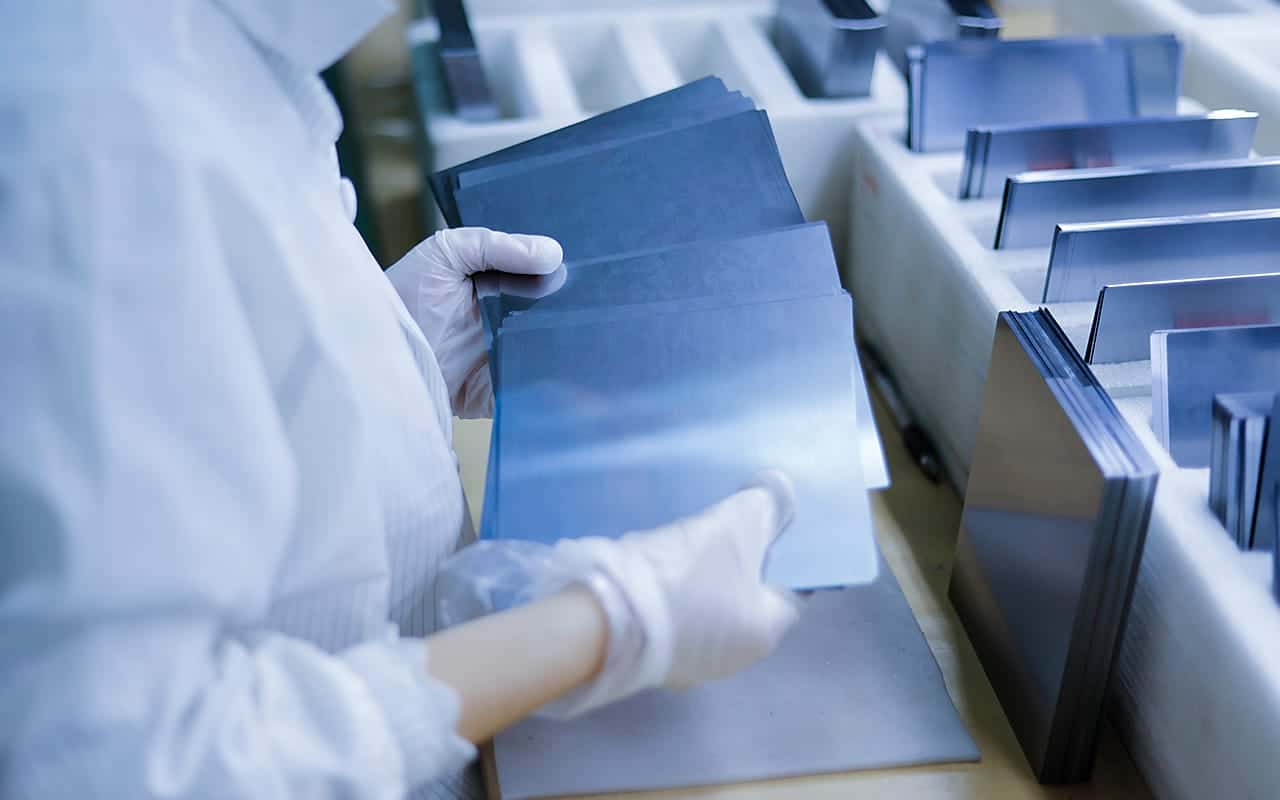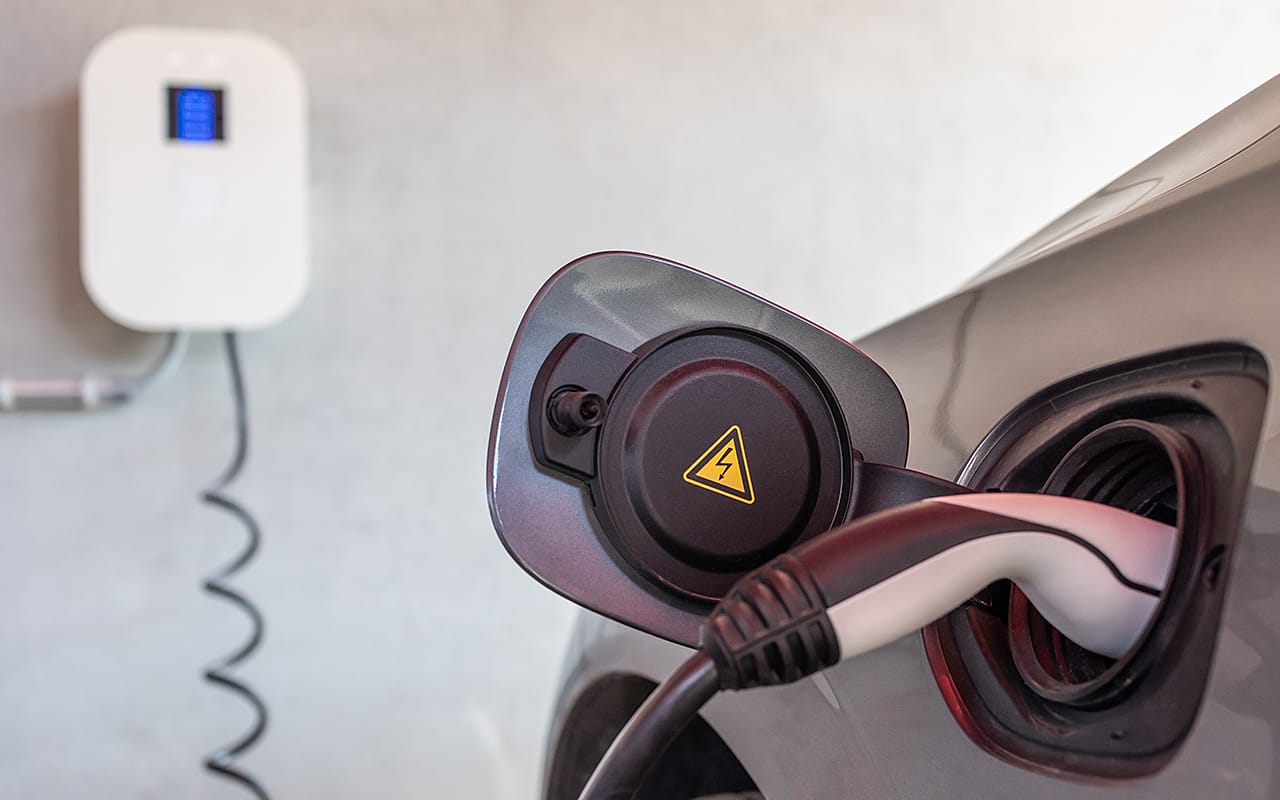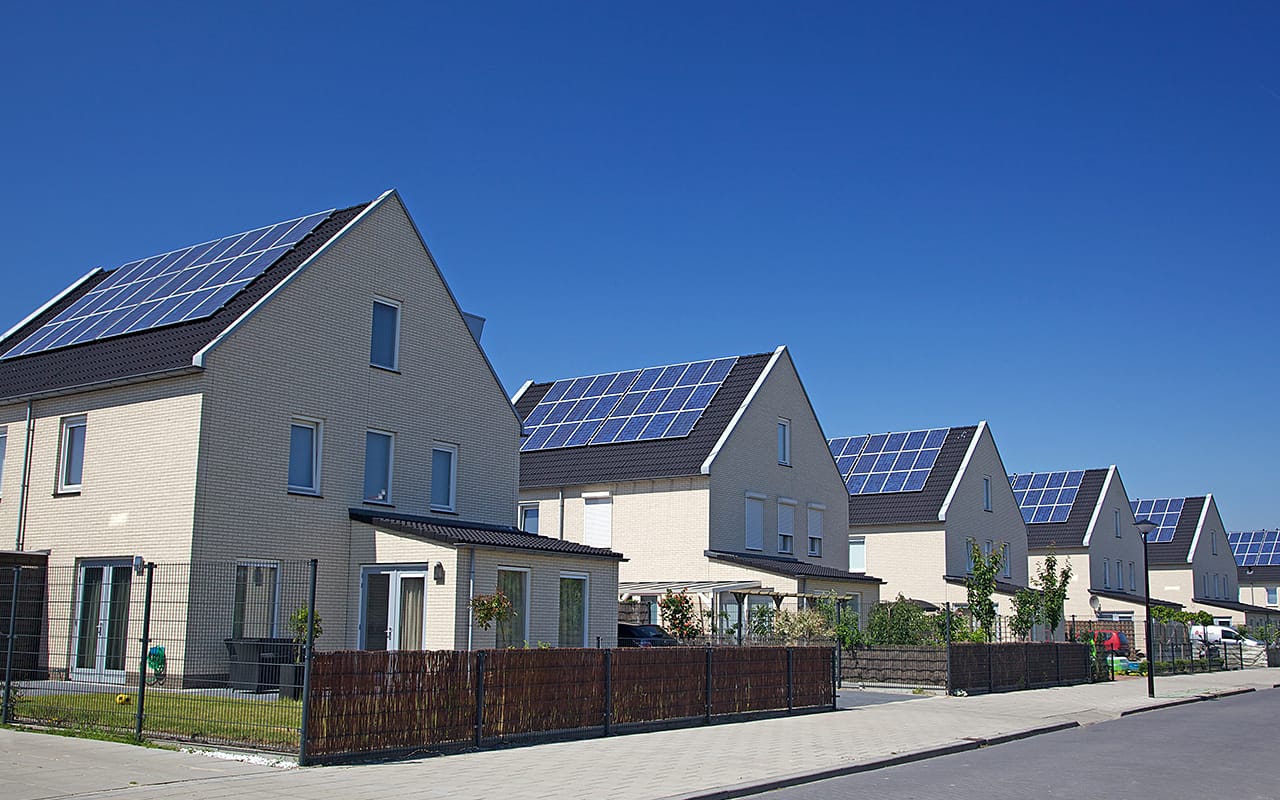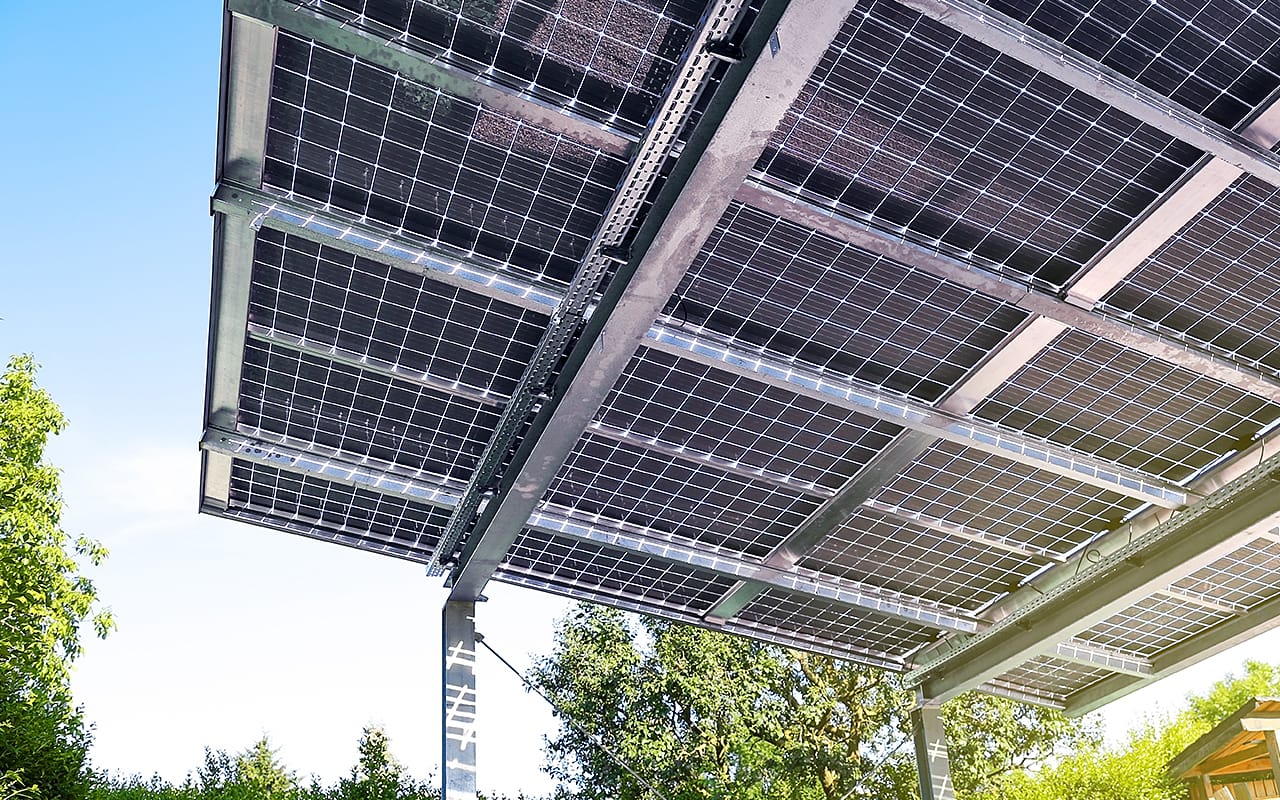The solar cell - types, function and efficiency

Photovoltaic systems are now a common sight on many buildings and properties. They are an important part of the energy transition. Solar cells are an essential component of solar systems. In the following article you will learn how they work, what types there are and what their efficiency is.
How are solar cells constructed?
Silicon solar cells consist of three layers. The main components are the two differently doped silicon layers: the n-doped layer and the p-doped layer. Phosphorus is mixed into the n-doped layer, which makes it negative (has free electrons). Boron is mixed into the p-doped layer, which makes it positive (it lacks electrons). Between the two layers there is a boundary layer through which released charges can only pass with the help of sunlight. In this core of the solar cell, an electric field is created by electron movements - also known as a p-n junction.
How do solar cells work?
The semiconductor silicon used in solar cells reacts to the sun's rays, which contain photons, by releasing electrons. Positively charged holes remain there. Depending on their charges, the electrons move to the negative or positive electrode. While the electrons move to the top of the silicon, the holes move to the bottom. The charges flow upwards through the conductive metal layers and thus reach the consumer that needs the energy - this can be illuminants, computers or power grids. The circuit is then closed by the electrons moving back to the layer with the missing electrons.
Metallic contacts on the front and back, which are connected to each other via a cable, ensure that the electricity is also usable for consumers. A holistic contact layer on the back conducts the electrons and makes them flow via a cable. This creates an electrical circuit. On the front, the contacts are applied in the form of a thin grid so that light can fall on the surface.
What types of solar cells are there?
Solar cells are one of the most important components of a photovoltaic system, because they play a decisive role in determining how high the initial costs of the PV system are and how much electricity it can generate. There are currently three different types of solar cells that are of interest to private users: Monocrystalline solar cells, polycrystalline solar cells and thin-film cells.
-
Monocrystalline solar cells
Monocrystalline solar cells consist of single-crystal silicon. This cell type has a very high silicon content and, with an efficiency of about 20 percent, is the most effective solar cell for direct solar radiation. Due to the complex production, however, monocrystalline modules are comparatively expensive.
-
Polycrystalline solar cells
Polycrystalline solar cells are also made of silicon, although the silicon in this type is not as pure. Since the module production is less costly and only little waste is produced due to the square shape of the cell, polycrystalline solar cells are cheaper and also better for the environmental balance of the photovoltaic system. They are often considered the solar cells with the best price-performance ratio. However, the efficiency of around 15 percent is lower because less pure silicon is used.
-
Thin-film cells
Thin-film cells belong to the amorphous, i.e. non-crystalline solar cells. They are also made of silicon, which is mixed with other materials and vapour-deposited in a very thin layer onto a substrate, such as glass. The efficiency is only five to seven percent, which is why it has to be compensated by a larger module area. Depending on the carrier material, thin-film cells are very flexible and can even be rolled and folded. The production process is relatively uncomplicated, which makes these cells cheaper than crystalline cells (thick-film cells).
What is the efficiency of solar cells?
The efficiency (represented by the Greek letter η) indicates the effectiveness with which the solar cell works. It is calculated from the ratio of the electrical energy emitted to the incident light energy. The closer this value is to the maximum of 1 (100 percent), the higher the efficiency of the solar cell. The efficiency describes how well the solar cell utilises the energy available as light. An important factor for the efficiency of solar cells is the material used. At present, almost all solar modules are made of silicon.
In addition to current losses, the temperature of the modules and the processed frequencies of the light spectrum are also factors influencing the efficiency of solar cells. The latter determine the physically possible limit of efficiency from monocrystalline silicon. In theory, 33 percent is possible, but this is not achieved in practice. A solar cell always has a higher efficiency than a photovoltaic system because the losses of all components of a system are included in the total efficiency. In the inverter, direct current is converted into alternating current, which is also associated with losses. In addition, the length and cross-sections of connecting cables as well as long cables for alternating current reduce the efficiency.
The sum of the losses of a system can reach four percent and more, which affects the total yield. Therefore, when building a solar system, in addition to choosing the appropriate solar cells/modules, the selection of the other components is also important. The efficiency alone is not decisive for the choice of solar cell type for a photovoltaic system. You should consider all boundary conditions and use the solar cells that promise the most effective yield for you overall.
About the author
TRITEC has specialised in the generation of solar power through photovoltaics for over 34 years. We are active worldwide in both photovoltaic wholesale and large-scale plant construction. In addition to our proven PV mounting system, we also offer our own intelligent system solutions for the planning, design and performance control of photovoltaic systems, as well as branded products from leading photovoltaic manufacturers.




